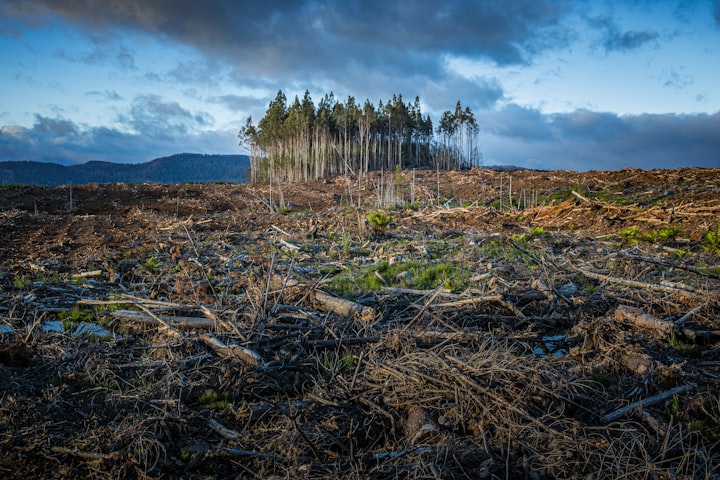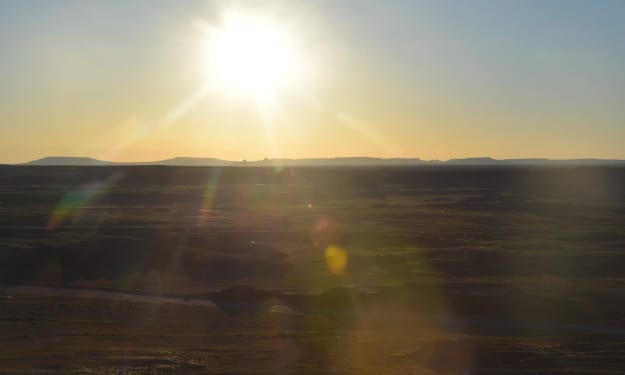Unveiling the Hidden Wounds
The Emotional Toll of Climate Change on Individuals and Communities

Climate change, a global crisis of epic proportions, is not merely an environmental challenge—it is a deeply human one. Beyond the melting ice caps and rising temperatures lies a less visible, yet equally significant, toll: the emotional burden borne by individuals and communities affected by the consequences of a rapidly changing planet. In this article, we delve into the profound emotional impact of climate change, unearthing the hidden wounds that afflict those grappling with an uncertain future.
Picture a small coastal community nestled along the shoreline. Families have lived here for generations, their lives intertwined with the ebb and flow of the tides. However, the relentless encroachment of rising sea levels has transformed the tranquil existence into one marred by fear and despair. For the residents of this fictional town, aptly named Bayview, the emotional toll of climate change is etched upon their faces.
We meet Emma Martinez, a resident whose family has called Bayview home for centuries. Emma's voice quivers as she recalls the devastation wrought by a recent storm surge. "Our home, filled with memories and cherished possessions, was engulfed by the relentless tide," she says, her eyes welling with tears. "The sense of loss is overwhelming—losing not just a physical structure, but a sense of place, safety, and belonging."
Emma's experience is far from isolated. Communities across the globe face similar heart-wrenching circumstances. The emotional toll of climate change infiltrates every facet of their lives. Families uprooted by wildfires must grapple with the trauma of losing their homes and witnessing the destruction of their beloved landscapes. Farmers who have seen their crops wither and their livelihoods vanish face despair and anxiety, uncertain of their future.
Children, the innocent victims of a changing climate, bear a particularly heavy burden. Their sense of wonder and innocence is tainted by anxiety, fear, and a deep-seated concern for the world they are inheriting. Their once carefree childhoods are overshadowed by the specter of uncertainty—rising sea levels, extreme weather events, and the prospect of an unstable future.
The emotional toll extends beyond the individual level, permeating the very fabric of communities. Once-vibrant neighborhoods are transformed into landscapes of sorrow, resilience, and communal grief. Social bonds are tested as individuals grapple with loss, displacement, and the heavy weight of an uncertain future. The emotional strain strains relationships, challenging the collective spirit that once bound these communities together.
Yet, amid the despair, seeds of resilience and hope take root. Communities come together, united by their shared experiences, to support one another through the darkest of times. Neighbors lend a helping hand, offering solace and a shoulder to lean on. Grassroots movements emerge, demanding action and fostering a sense of empowerment in the face of seemingly insurmountable odds.
Recognizing and addressing the emotional toll of climate change is of paramount importance. Mental health support networks, community resilience programs, and initiatives promoting emotional well-being are crucial in navigating the emotional landscape of a changing climate. Open dialogue, empathy, and compassionate understanding are needed to create spaces where individuals and communities can process their grief, fears, and anxieties.
As global citizens, we have a responsibility to act. Our actions must go beyond reducing emissions and implementing sustainable practices—although these are essential steps. We must also champion policies and programs that prioritize the emotional well-being of those impacted by climate change. Our collective response should embody empathy, compassion, and a recognition of the emotional toll borne by individuals and communities around the world.
Climate change is not just a battle against rising temperatures and shifting weather patterns—it is a battle for the preservation of our emotional well-being, our sense of security, and our shared humanity. By acknowledging the hidden wounds, we can foster resilience, inspire hope, and collectively strive for a future where the emotional toll of climate change is alleviated, and the dignity of individuals and communities is restored.
Let this be a rallying call to action—an urgent plea to prioritize the emotional well-being of those affected by climate change. Together, we can create a world that not only sustains our planet but also nurtures the hearts and minds of those who call it home. The time to act is now, for the emotional toll of climate change cannot be ignored any longer.
Climate change is a global crisis that demands collective action. While governments play a crucial role in implementing policies and regulations, individuals also bear a significant responsibility in addressing and mitigating the effects of climate change. In this article, we explore the shared responsibilities of individuals and governments in the battle against climate change.
Individual Responsibility:
As individuals, we have the power to make daily choices that collectively contribute to a more sustainable future. Here are some ways in which individuals can take responsibility for their environmental impact:
1. Energy Consumption: Reduce energy consumption by conserving electricity, using energy-efficient appliances, and opting for renewable energy sources whenever possible. Small changes, such as turning off lights when not in use or unplugging electronics, can make a significant difference.
2. Transportation: Opt for sustainable transportation options like walking, cycling, or using public transportation. If feasible, consider carpooling or driving electric or hybrid vehicles to minimize carbon emissions.
3. Waste Reduction: Practice responsible waste management by recycling, composting, and minimizing single-use plastics. Make conscious choices while shopping, favoring products with minimal packaging and opting for reusable alternatives.
4. Water Conservation: Conserve water by fixing leaks, using water-saving fixtures, and practicing mindful water usage. Every drop counts, and small changes in daily routines can contribute to significant water conservation.
5. Sustainable Diet: Consider adopting a more sustainable diet by reducing meat consumption and choosing locally sourced, organic, and plant-based options. The production of animal products is a significant contributor to greenhouse gas emissions.
Government Responsibility:
While individual actions are essential, governments have the authority and resources to implement policies and regulations that drive systemic change. Here are key areas where governments can assume responsibility:
1. Policy and Legislation: Governments should enact and enforce robust climate change policies, setting clear targets for emissions reductions and renewable energy adoption. They can also introduce regulations to incentivize sustainable practices and penalize environmentally harmful activities.
2. Renewable Energy Transition: Governments should invest in renewable energy infrastructure, provide subsidies and incentives for clean energy production, and facilitate the transition away from fossil fuels. By supporting renewable energy sources, governments can accelerate the shift toward a low-carbon economy.
3. Environmental Education: Governments play a crucial role in promoting environmental education and awareness at all levels of society. By integrating climate change and sustainability into school curricula and public awareness campaigns, governments can empower individuals with knowledge and inspire action.
4. International Cooperation: Climate change is a global issue that requires international cooperation. Governments should actively participate in international climate negotiations and agreements, working collaboratively to set ambitious targets and share best practices in reducing greenhouse gas emissions.
5. Research and Innovation: Governments can allocate funding for research and development of clean technologies, sustainable agriculture practices, and climate adaptation strategies. Investing in innovation is vital to finding solutions that can mitigate the effects of climate change and foster resilience.
Ultimately, the fight against climate change is a shared responsibility. Governments and individuals must work hand in hand to bring about meaningful change. By embracing sustainable lifestyles, holding governments accountable for their environmental commitments, and actively participating in civic engagement, individuals can contribute to a more sustainable future. Simultaneously, governments must prioritize climate action, adopt ambitious policies, and create an enabling environment that empowers individuals and communities to make sustainable choices. Only through collective effort can we address the urgent challenges of climate change and safeguard our planet for future generations.





Comments
There are no comments for this story
Be the first to respond and start the conversation.